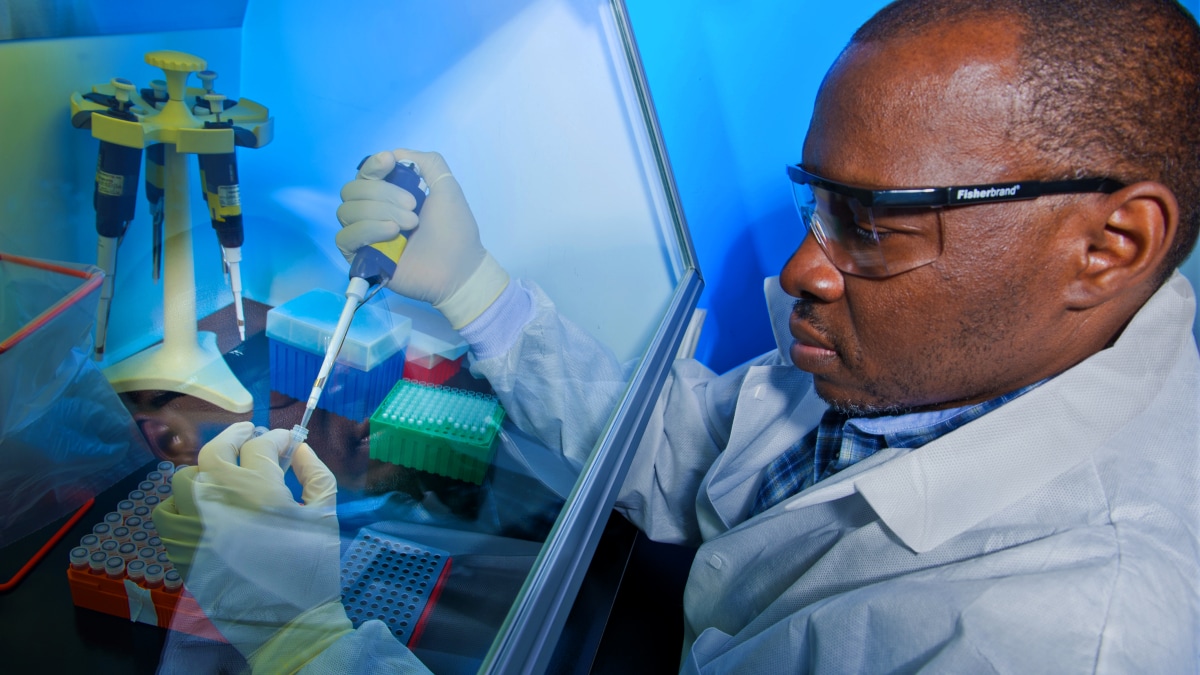Key points
- CDC has a laboratory that works primarily on Haemophilus influenzae and Neisseria meningitidis.
- Both pathogens are leading causes of bacterial meningitis in the United States.
- Learn how our laboratory scientists can assist health departments and public health laboratories upon request.

Our work
CDC's Bacterial Meningitis Laboratory focuses on 2 of the leading causes of bacterial meningitis in the United States:
- H. influenzae
- N. meningitidis
Find laboratory information about Streptococcus pneumoniae, which can also cause bacterial meningitis, on the Streptococcus Laboratory site.
Strep Lab: Streptococcus pneumoniae
Key activities
Key activities for the Bacterial Meningitis Laboratory include:
- Supporting laboratory surveillance
- Helping U.S. laboratories, including in response to outbreaks
- Building international laboratory capacity
- Researching special topics
If you have questions, contact us by email at meningnet@cdc.gov.
Laboratory surveillance
CDC's Bacterial Meningitis Laboratory supports laboratory surveillance in 3 primary ways:
- Active Bacterial Core surveillance (ABCs)
- Enhanced meningococcal disease surveillance
- H. influenzae pediatric supplemental surveillance
Active Bacterial Core surveillance
The laboratory supports active collection of laboratory information through ABCs, specifically the Isolate Bank.
ABCs
Enhanced meningococcal disease surveillance
The laboratory also supports enhanced data collection on meningococcal disease in 50 states and 3 large jurisdictions.
Meningococcal Disease Surveillance and Trends
H. influenzae pediatric supplemental surveillance
The Bacterial Meningitis Laboratory supports enhanced data collection on H. influenzae isolates from children younger than 5 years of age in 23 jurisdictions.
Why it's important
Collecting laboratory information improves public health efforts to protect people from serious illness caused by these pathogens.
U.S. laboratory support
Best practices: Diagnosing H. influenzae and meningococcal disease
Reference center
CDC's Bacterial Meningitis Laboratory is a well-recognized reference center for identification and characterization of H. influenzae and N. meningitidis. For these two pathogens, the laboratory can assist state and local health department laboratories with
- Characterizing isolates with features that could impact public health
- Quickly identifying serotype/serogroup during outbreaks
- Identifying phylogenetic relationships between isolates
- Developing and implementing laboratory procedures
Report suspected outbreaks to state or local health departments.
All requests require pre-approval
Because of limited resources, the laboratory can't provide molecular characterization for all requests. Characterization is prioritized for isolates or specimens where information is needed to answer pressing public health questions. An outbreak is one example where rapid serotyping/serogrouping and molecular typing has immediate value.
International capacity building
CDC's Bacterial Meningitis Laboratory also helps international laboratories expand their skills and improve the quality of their work.
Specialized research projects
The laboratory is actively involved with specialized research projects that can inform public health prevention and control efforts.
Resources
CDC disease sites
Manual for the Surveillance of Vaccine-Preventable Diseases
In addition to providing current surveillance guidelines, the manual also provides information about specimen collection and shipping.
